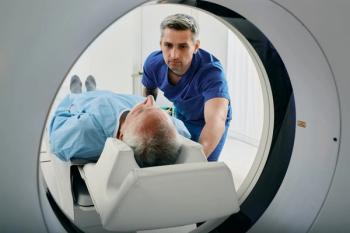
Digirad readies solid-state camera
Solid-state digital gamma camera developer Digirad next week will display a completed prototype of its Notebook Imager system for the first time at a Society of Nuclear Medicine meeting, according to Karen Klause, president and CEO of the San Diego
Solid-state digital gamma camera developer Digirad next week will display a completed prototype of its Notebook Imager system for the first time at a Society of Nuclear Medicine meeting, according to Karen Klause, president and CEO of the San Diego company. Digirad several months ago filed for 510(k) clearance of the system, which, if cleared, will be the first solid-state digital gamma camera on the market.
Digirad will show a wide range of clinical images collected with Notebook Imager, including bone, cardiac, liver, and thyroid scans. Notebook Imager is capable of the same range of applications as a standard gamma camera, with the exception of whole-body bone scans, which must be acquired a section at a time, due to the camera's small field-of-view. In addition, SPECT studies are conducted with patients seated in a rotating chair.
Digirad has been building a production capacity for the systems, and is also hiring a sales force to market the cameras directly in the U.S. The company is open to OEM relationships for distribution of Notebook Imager in international markets, Klause said.
Newsletter
Stay at the forefront of radiology with the Diagnostic Imaging newsletter, delivering the latest news, clinical insights, and imaging advancements for today’s radiologists.



























